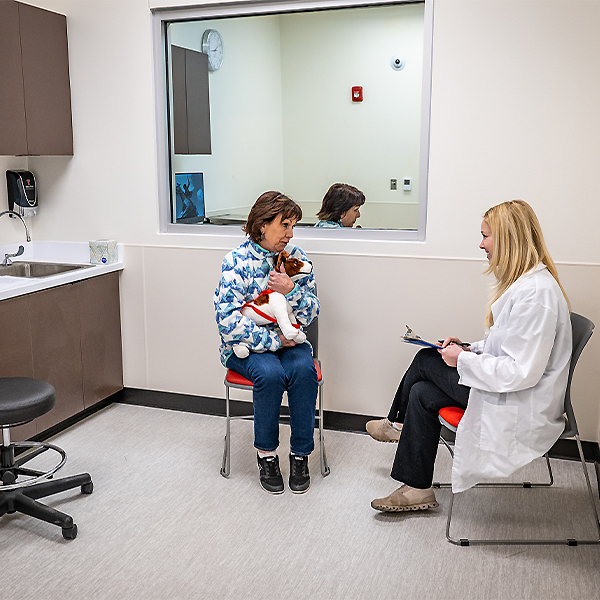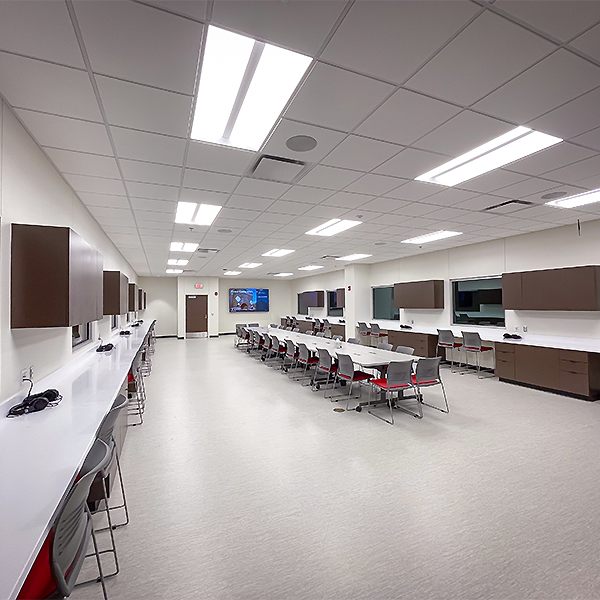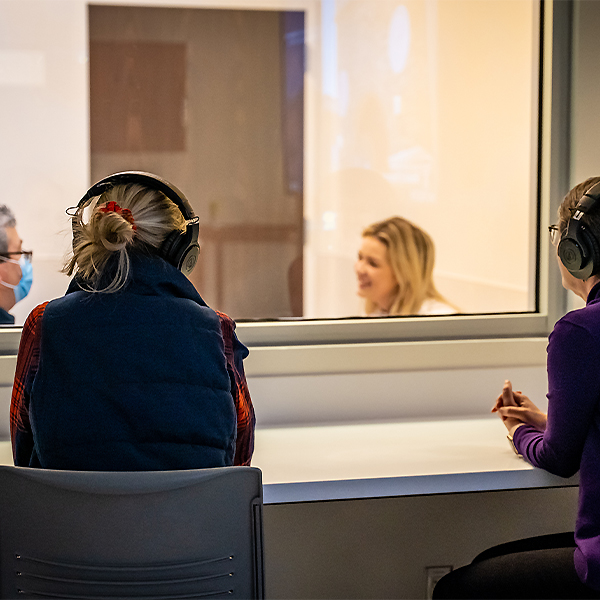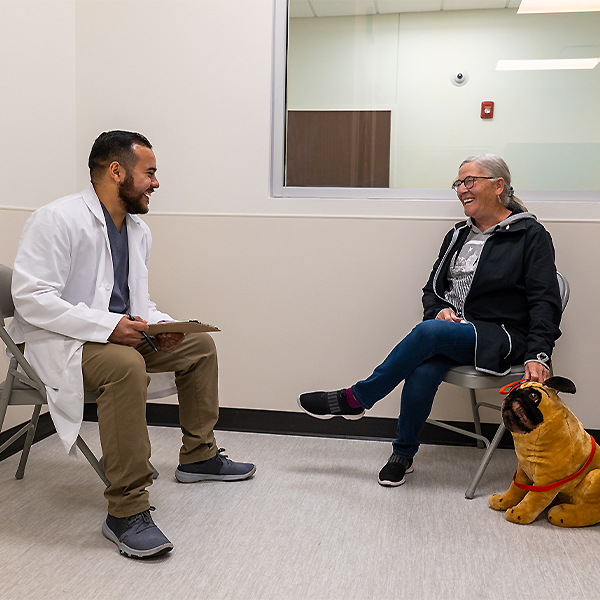
In veterinary medicine, evidence shows communication skills are equally or more important than other clinical skills such as surgery.
Many of you have probably heard something like, “I want to be a veterinarian so I can be around animals and don't have to interact with people.” The reality is, however, great veterinarians are typically great communicators.
Evidence shows communication skills are equally or more important than other clinical skills such as surgery. If you think about your own experience, your connection to the veterinarian is so important. This connection comes from effective communication, and this is a skill that can be taught.
Not surprisingly, a focus of our program is to develop our students' ability to communicate
effectively across a wide array of settings. This means being proficient at identifying
the needs of a rancher, horse owner, or a dog or cat owner, and communicating in many
other situations. Effective communication is the bridge that connects knowledge and
skills to the hearts and minds of animal owners. 
We purposefully designed our program to ensure our students understand the strategies of communication through interactive classes which develop and test communication skills. One of the neat areas within our school is the Communication Center, where our students spend a considerable amount of their first three years practicing and being tested on their communication skills. This includes 10 exam rooms around a large viewing area. Each exam room looks exactly like one you might see in a real-world veterinary clinic. We work with trained individuals portraying clients in standardized scenarios with our students.
Through role-playing real-life scenarios, our students develop the skills to effectively
gather a thorough history, explain complex medical terms in an understandable way,
deliver difficult news with empathy and compassion, and engage in effective teamwork.
The standardized clients are able to provide real-time feedback to help students improve. 
Also, each exam room has cameras and a microphone to record the interaction. This allows students to review their performance with our expert faculty to identify areas of improvement. Through this process, they hone their techniques and figure out ways to enhance their communication skills.
The Communication Center's viewing area allows students, staff, and faculty to listen
and watch the interaction with headphones while looking through the one-way glass
that is present in each exam room. This serves as a learning tool for the viewers,
and a means to share constructive feedback with students participating in the role-playing
exercise. 
As they say, practice until you get it right, then practice some more so you can't get it wrong. The process is designed around first learning and practicing the basics. After students master this level, we add complexity and difficulty until they master the next level, and so on. Through our intentional program, students discover connecting with the patients' owners on a genuine and caring level improves the quality of care they provide.
Our students are currently enjoying a well-deserved summer break. Most are spending some of their summer helping their communities by working in veterinary practices. We have a great network of practice partners giving our students wonderful hands-on experiences. This allows them to put their newly learned knowledge and clinical and communication skills to use as they observe how veterinary professionals interact with clients in real-world settings.
Communication ain't easy. In fact, it can be downright hard to deliver sad news. But it is a skill that can be taught and honed. That's why we incorporated such a rigorous, state-of-the-art communication program across our curriculum. After all, one of our students might actually be your veterinarian in the future. We want them to be the best they can be – for you and for your animals.
